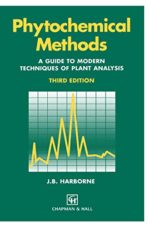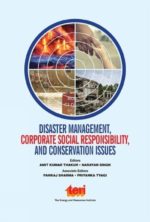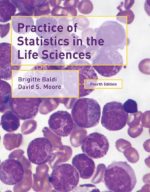-
Regression Models as a Tool in Medical Research
KSh 17,500.00While regression models have become standard tools in medical research, understanding how to properly apply the models and interpret the results is often challenging for beginners. Regression Models as a Tool in Medical Research presents the fundamental concepts and important aspects of regression models most commonly used in medical research, including the classical regression model for continuous outcomes, the logistic regression model for binary outcomes, and the Cox proportional hazards model for survival data. The text emphasizes adequate use, correct interpretation of results, appropriate presentation of results, and avoidance of potential pitfalls.
After reviewing popular models and basic methods, the book focuses on advanced topics and techniques. It considers the comparison of regression coefficients, the selection of covariates, the modeling of nonlinear and nonadditive effects, and the analysis of clustered and longitudinal data, highlighting the impact of selection mechanisms, measurement error, and incomplete covariate data. The text then covers the use of regression models to construct risk scores and predictors. It also gives an overview of more specific regression models and their applications as well as alternatives to regression modeling. The mathematical details underlying the estimation and inference techniques are provided in the appendices.
-
Phytochemical Methods A Guide to Modern Techniques of Plant Analysis 3rd Edition by A.J. Harborne (Author
KSh 4,500.00This long awaited third edition of Phytochemical Methods is, as its predecessors, a key tool for undergraduates, research workers in plant biochemistry, plant taxonomists and any researchers in related areas where the analysis of organic plant components is key to their investigations.
Phytochemistry is a rapidly expanding area with new techniques being developed and existing ones perfected and made easier to incorporate as standard methods in the laboratory. This latest edition includes descriptions of the most up-to-date methods such as HPLC and the increasingly sophisticated NMR and related spectral techniques. Other methods described are the use of NMR to locate substances within the plant cell and the chiral separation of essential oils.
After an introductory chapter on methods of plant analysis, individual chapters describe methods of identifying the different type of plant molecules: phenolic compounds, terpenoids, organic acids, lipids and related compounds, nitrogen compounds, sugar and derivatives and macromolecules. Different methods are discussed and recommended, and guidance provided for the analysis of compounds of special physiological relevance such as endogenous growth regulators, substances of pharmacological interest and screening methods for the detection of substances for taxonomic purposes. It also includes an important bibliographic guide to specialized texts.
This comprehensive book constitutes a unique and indispensable practical guide for any phytochemistry or related laboratory, and provides hands-on description of experimental techniques so that students and researchers can become familiar with these invaluable methods. -
Disaster Management, Corporate Social Responsibility and Conservation Issues
The vulnerability of various regions of the world towards disasters, both natural and anthropogenic, is widely known. Disasters such as landslides, earthquakes, floods have a long-lasting effect on the environment and socio-economic systems. These disasters have been occurring at regular intervals of time and the economic and social cost of these mount every year.
Disaster Management, Corporate Social Responsibility, and Conservation Issues deals with the fundamental principles and current practices in the field of disasters. The book covers various environmental challenges and issues related to natural disasters that affect all forms of life. It discusses how disasters can be managed and the role corporate social responsibility can play in addressing the issues. The book also provides conservation steps that can help in mitigating disasters. Experts from different fields have contributed diverse, technical, and best concepts. Through the writings, the book will make readers better prepared for the challenges of disaster management and strive towards sustainable development.
Contents:
- A Review of Flood Disaster in Assam State of India: Causes and Impacts
- Rampant Tourism an Ecological Disaster in Waiting: Case study from Ladakh
- A Retrospective Analysis of Earthquake Hazards and Hydropower Development in Indian Himalayan Region
- Factors Causing Landslides and Importance of Parameters during Landslide Hazard Zonation: Experiences from Kumaun Himalayas
- Major Natural Disasters and Livelihoods Improvement of Disaster-affected Areas through Horticulture in Uttarakhand
- Effects of Climate Change on Agriculture: Indian Perspective
- Potentially Important but Neglected Roadside and Wasteland Medicinal Plants of Uttarakhand
- Natural disasters in hilly areas: special reference to people living in Indian Himalayan Region
- Ambient air pollution and its sources in the semi-rural sites in the Northwestern Indian Himalayas
- Diversity analysis, indigenous uses and current status of medicinal plants in Mohalkhad Watershed of Himachal Pradesh, Northwestern Himalayas
- Site occupancy and abundance of sloth bear in southern Aravalli Hills, India
- Managing disaster through Corporate Social Responsibility and sustainability-based project on apple management in Himachal Pradesh leading to sustainable development
- Community Participation in Disaster Management: Case studies from Uttarakhand
- Commentary on evolution and divergence of the concept of CSR and recent developments laid by Companies Act 2013
-
Practice Of Statistics In The Life
This remarkably engaging textbook is the perfect learning resource for undergraduate and postgraduate biology students studying statistics and data analysis. Part of the best-selling Moore family of statistics books, it covers essential statistical topics with examples and exercises drawn from across the field of life sciences, including disciplines such as nursing, public health, and allied health. Based on David Moore s classic The Basic Practice of Statistics , this textbook applies the bestseller s signature emphasis on statistical thinking to the world of life sciences, helping engage students and underlining how statistics can directly apply to the projects they re working on. This textbook will be available on SaplingPlus, a highly-intelligent online teaching and learning tool which will be available for statistics in Autumn 2018.




